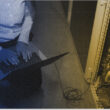Think of being a successful business person, and then seeing years of hard work going down in smoke–literally so–due to a fire accident. To Indian businesses, a fire can be disastrous particularly when it involves stock-intensive activities such as retail, manufacturing or warehousing. It is not only the loss in infrastructure; the largest blow usually comes in the form of damaged or destroyed stock and inventory. This is where Fire Insurance policies covering the stock and inventory come into the picture as a much-needed savior.
This blog walks you through the basics of stock and inventory coverage under Fire Insurance, explaining how it works, why it is important, and what best practice businesses should have in place to make sure they are properly covered.
Let’s start with the basics..
Understanding Fire Insurance
Fire Insurance is a type of property insurance that safeguards losses that are caused by fire and other related perils. Most insurers in India have adopted the Standard Fire and Special Perils Policy (SFSP) framework to govern such policies.
A typical Fire Insurance Policy covers:
- Damage or loss due to fire, lightning, explosion or implosion.
- Damage caused by the impact of vehicles, aircraft, or falling objects.
- Breakage of water tanks and pipes by bursting or overflowing.
- Natural disasters, such as storms, floods, and riots (when specifically covered by the policy)
Nevertheless, there are exceptions as well. War, nuclear risks, intentional neglect, or electrical short-circus are typically not covered under fire insurance unless mentioned otherwise in the policy schedule.
Significance of Stock and Inventory Coverage
Inventory and stock constitute the greatest portion of the working capital of many businesses. In case of a fire that destroys raw materials, semi-finished goods or finished products, the financial loss can be catastrophic. Retail chains, textile manufacturers, FMCG distributors, and pharmaceutical companies are among the industries that store high-value goods in bulk. For such companies, a fire accident may halt all operations for a considerable time period .
Consider an example of a garment manufacturer in Vardhman. If a warehouse with ready-to-export consignments is caught in fire, it is not only a loss in the fabric, but also in terms of the loss of clients, lost orders, and disrupted supply chains. This is why the stock and inventory coverage in Fire Insurance policies is not optional; it is necessary in continuity of business.
How Stock and Inventory Coverage Works
When stock and inventory are insured by businesses under fire insurance, the policy will compensate for the value of goods that have been damaged or destroyed by fire or other covered perils.
Types of Stock That Can Be Insured:
- Raw materials waiting for production
- Work-in-progress goods
- Finished products ready for sale
- Packaging materials and consumables
Basis of Valuation
The insurer calculates compensation based on one of the following methods:
- Cost Price – What the business paid to acquire or produce the goods.
- Market Price – The prevailing market value of goods at the time of loss.
- Replacement Value – The cost of replacing goods with similar ones.
To avoid disputes, businesses must declare the sum insured correctly, ensuring it matches the value of the stock at risk.
Types of Fire Insurance Policies Covering Stock and Inventory
- Specific Policy
Covers stock at a single location for a fixed amount. Suitable for businesses operating from one warehouse or facility.
- Floating Policy
Covers stock across multiple locations under a single policy. Ideal for businesses with regional warehouses or branches.
- Declaration Policy
Useful for businesses with fluctuating stock levels. The insured provides periodic declarations of stock value, and the premium is adjusted accordingly.
- Adjustable Policy
Similar to declaration policy but allows automatic adjustment of the sum insured based on current stock values.
- Comprehensive Policy
Offers extensive protection, including coverage for stock, buildings, machinery, and add-on covers. Best suited for large enterprises with complex operations.
Add-On Covers and Extensions for Stock Protection
Fire insurance is great, but add-ons can transform a basic policy into a great one. To protect better, businesses can use extensions that are specific to stock losses.
- Spontaneous Combustion Cover –Covers against losses where the goods spontaneously ignite (e.g., coal, chemicals).
- Deterioration of Stock –Covers the damage of goods caused by smoke, water, or chemicals used in extinguishing a fire.
- Debris Removal Cover –Reimbursement of the expense of cleaning up the burnt or damaged inventory from the site.
- Loss of Profit (Business Interruption Cover) –Secures the loss of revenue associated with fire damage to inventory, which guarantees business continuation.
These add-ons provide businesses with assurance that they do not only reclaim the value of their physical stock but also protect against indirect financial shocks..
Factors Influencing Premiums for Stock and Inventory Coverage
Premiums for Fire Insurance policies with stock & inventory coverage are not one-size-fits-all. Several factors can play a role in determining the premium. Some of these are-
- Type of Goods Stored – Premiums are charged higher on highly flammable goods such as chemicals, textiles or plastics, as opposed to durable goods.
- Storage Methods –The risk of fire can be mitigated through the use of fire resistant storage systems, sprinkler, and alarming systems, which will result in reduced premiums.
- Location of Premises –Warehouses in the high risk locations (industrial belts, congested markets) can attract higher premiums.
- Value of Stock –The greater the declared stock value, the higher the premium.
- Policy Type –Adjustable and declaration policies could be more flexible and cost effective to businesses with varying stock.
Claim Process for Stock and Inventory Loss
Businesses need to respond promptly when a fire strikes, in order to make a Fire Insurance claim. The following steps are normally involved in the claim process:
- Immediate Intimation – Inform the insurer about the incident without delay.
- Loss Minimization – Take all possible steps to reduce further damage (e.g., salvaging usable stock).
- Documentation Submission – Provide purchase invoices, stock registers, and accounts to prove the value of stock.
- Surveyor Assessment – Insurers appoint licensed surveyors to inspect the site and assess the loss.
- Settlement – Once the surveyor’s report is approved, the insurer releases compensation based on the policy terms.
Timely reporting and accurate documentation make the difference between a smooth claim and a disputed one.
Common Challenges in Stock and Inventory Claims
Despite the availability of coverage, businesses often struggle during claims due to:
- Underinsurance – Declaring a lower value of stock to save on premiums backfires when compensation is reduced proportionately.
- Incorrect Valuation – Failing to update the stock’s replacement value results in inadequate coverage.
- Documentation Issues – Missing stock registers, outdated inventory records, or discrepancies between books and reality can delay or deny claims.
- Failure to Update Declarations – In declaration policies, not submitting regular stock updates can invalidate claims.
Best Practices for Businesses to Ensure Adequate Coverage
- Conduct Regular Stock Audits – Keep records updated and accurate to avoid disputes during claims.
- Choose the Right Policy Type – For fluctuating stock, declaration or adjustable policies work best.
- Avoid Underinsurance – Declare the correct stock value, even if it means a slightly higher premium.
- Opt for Add-Ons – Tailor coverage to your industry needs, especially if dealing with perishable or volatile goods.
- Work with Insurance Experts – Consult brokers or advisors to design a policy that aligns with your business risk profile.
- Invest in Fire Safety Measures – Demonstrating strong fire safety protocols not only reduces risk but can also lower insurance premiums.
Final Thoughts:
The lifeblood of most businesses is stock and inventory. Their loss to a fire can bring operations to a standstill overnight. Properly designed Fire Insurance Policy with adequate stock and inventory coverage helps businesses to not only recover after such misfortunes but also come back with financial strength.
Whether it is the selection of the appropriate type of policy or the correct reporting of stock and the add-on covers, each decision will help secure your business. In the current competitive world where supply chains are closely interwoven and client demands are relentless, protecting your stock and inventory through a Fire Insurance Policy is not only a good risk management practice but a business prerequisite indeed.
Therefore, now is the time to check your Fire Insurance coverage, provided that you haven’t done it yet. It is not about ‘whether’ such a fire incident will happen, but ‘when’. Remeber, readiness can make all the difference here.








